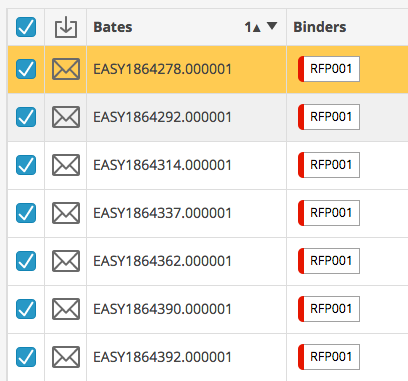The new Amendments to the Federal Rules of Civil Procedure are bringing new voices to discuss eDiscovery. Magistrate Judge Nina Y. Wang issued a thoughtful opinion of the new Rules in Kissing Camels Surgery Ctr., LLC v. Centura Health Corp. (D.Colo. Jan. 22, 2016, Civil Action No. 12-cv-03012-WJM-NYW) 2016 U.S. Dist. LEXIS 7668.
Here is the short version of the dispute in a complex case: The Plaintiff brought a motion to strike the Defendants’ requests for production that were duplicative. The Plaintiff had already produced a terabyte of ESI and were not in the mood for the Defendants’ position that the Plaintiff identify what ESI they had already produced that was responsive to the Defendants’ requests. Kissing Camels, at *3-4, 7-9.
Judge Wang very effectively summarized the world of civil litigation by invoking Chief Justice John Roberts’ Year End Report on the Federal Judiciary, which stated the 2015 FRCP Amendments were intended to:
(1) Encourage greater cooperation among counsel;
(2) Focus discovery—the process of obtaining information within the control of the opposing party—on what is truly necessary to resolve the case;
(3) Engage judges in early and active case management; and
(4) Address serious new problems associated with vast amounts of electronically stored information.
Kissing Camels, at *5.
Judge Wang also made it a point to highlight the Chief Justice’s note that Rule 1 gives both lawyers and the Court an affirmative duty to work together to resolve disputes efficiently. Id.
The Court further outlined the proportionality principles of Rule 26(b)(1), which require Courts to “consider the importance of the issues at stake in the action, the amount in controversy, the parties’ relative access to relevant information, the parties’ resources, the importance of discovery in resolving the issues, and whether the burden or expense of the proposed discovery outweighs its likely benefit.” Kissing Camels, at *5-6.
The Court noted that many of the Defendants’ discovery requests were improper omnibus requests where no effort was made to tailor the discovery request to the issues in the case. Kissing Camels, at *7-8. The Plaintiff rightly objected to these requests, but made only improper boilerplate objections. Kissing Camels, at *8. The new Rule 34(b)(2)(B)-(C) requires parties to object with “specificity” and “an objection must state whether any responsive materials are being withheld on the basis of the objection.” Id. The Court described the Plaintiffs’ objection as follows:
As far as this court can tell, Plaintiffs fail to provide any specificity to their objections, including their objection that they have already produced responsive documents. Rather, it appears that Plaintiffs’ response simply points generally to the production of 1 terabyte of information—conservatively, millions of pages—without providing any type of guidance to Defendants as to where in the production such responsive documents are to be found.
Kissing Camels, at *8-9.
Judge Wang took a deep dive into the issue of whether Rule 34(b)(2)(E)(i) and (ii) both apply to electronically stored information. As many recall, subsection (i) requires a party to produce documents in the ordinary course of business or label a production. Kissing Camels, at *9. Many courts have treated (E)(i) and (E)(ii) as “supplementary rather than alternative.” Kissing Camels, at *12.
The ESI had been produced in a searchable format, so normally there would be no further analysis or production requirements. However, the Court noted the case was not ordinary. Judge Wang explained:
Based on the specific facts before me, including the volume of the document production to date, the asymmetry of information regarding the production between Plaintiffs (who are trial ready with respect to co-Defendant Centura Health Corporation and in a separate case with similar allegations against Cigna), the duration of time during which this case has been pending, and the fact that the Parties suggest that additional discovery must be conducted as to both the claims of the Second Amended Complaint and the counterclaims asserted by Defendants, this court concludes that Plaintiffs must provide additional information about where in the production Defendants may find certain information. This court will not, however, compel Plaintiffs to provide bates range numbers for responsive documents for every Request for Production; given the breadth of the discovery requests, such an Order would simply foment additional disputes. Rather, this court will permit Defendants to identify ten limited categories of documents already requested through the existing Requests for Production to which Plaintiffs objected based on being duplicative (e.g., documents that reflect Plaintiffs’ internal communications regarding network contracts with United, Anthem, Aetna) no later than February 4, 2016. Once identified, Plaintiffs must identify bates ranges of responsive documents to those ten categories, in writing, no later than February 16, 2016. This will ensure that Defendants prioritize their requests regarding location of responsive documents within the 1 terabyte of data, and will limit Plaintiffs’ obligation to sort through the production on Defendants’ behalf and correlate every Request for Production to specific bates ranges.
Kissing Camels, at *14-15.
Bow Tie Thoughts
Electronically stored information is generally produced as it is ordinarily maintained or in a reasonably useable form under Rule 34(b)(2)(E)(ii). However, I still like to do my issue coding for responses that could comply with Rule 34(b)(2)(E)(i) for organization.

I like setting up issue coding to correspond to each request for production. As searches are conducted for each response, ESI that is responsive to that request is tagged for that response. As is often the case, an email or Excel file can be responsive to more than one request, but that does not mean the data is produced more than once. After review for responsive discovery is completed, a report can be exported out to Excel if the requesting party has sought the production to comply with Rule 34(b)(2)(E)(i).
I know many attorneys who think is a waste of time. Others take a hard line to make the other side’s life as difficult as possible. I think it is vital for internal monitoring of knowing which ESI is responsive to what request. Moreover, if there is a reason to object to a specific request, knowing what ESI might be responsive makes objecting to that request with specificity a far easier task.



